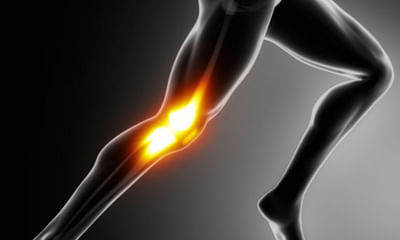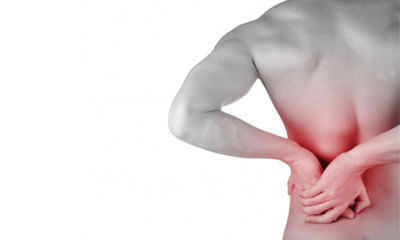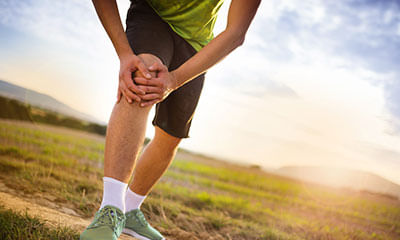Stretch Mark Cream For Men
My age is 22 and still my foreskin is not going back what should be used as treatment. ...
Ask Free Question
The inability to retract the foreskin is known as phimosis. It's not uncommon for some men to experience phimosis during adolescence or early adulthood, and in many cases, it resolves on its own over time. However, in some cases, medical intervention may be required. Here are a few potential treatment options that a doctor might recommend: gentle stretching exercises: regularly and gently stretching the foreskin can help loosen it over time. This can be done during a warm bath or shower when the skin is more pliable. However, it's crucial to be patient and avoid forcing or causing pain. Topical steroid creams: in some cases, a doctor may prescribe a topical steroid cream to help soften the foreskin and make it easier to retract. This treatment is usually used in combination with stretching exercises. Preputioplasty: this is a minor surgical procedure that involves making a small incision in the foreskin to widen the opening. It allows the foreskin to retract more easily without removing it entirely, preserving its protective function. Circumcision: in severe or persistent cases of phimosis, circumcision, which involves the removal of the foreskin, may be recommended. However, this is typically considered a last resort after other treatment options have been explored.
Does this hammer of thor or any other penis enlargement pills do really work and give a growth? ...
Ask Free Question
Most advertised penis-enlargement methods are ineffective, and some can cause permanent damage to your penis. Here are some of the most widely promoted products and techniques: pills and lotions. These usually contain vitamins, minerals, herbs or hormones that manufacturers claim enlarge the penis. None of these products has been proved to work, and some may be harmful. Vacuum pumps. Because pumps draw blood into the penis, making it swell, they're sometimes used to treat erectile dysfunction. A vacuum pump can make a penis look larger temporarily. But using one too often or too long can damage elastic tissue in the penis, leading to less firm erections. Exercises. Sometimes called jelqing, these exercises use a hand-over-hand motion to push blood from the base to the head of the penis. Although this technique appears safer than other methods, there's no scientific proof it works, and it can lead to scar formation, pain and disfigurement. Stretching. Stretching involves attaching a stretcher or extender device â also referred to as a penile traction device â to the penis to exert gentle tension. A few things that might actually help although there's no guaranteed safe and effective way to enlarge your penis, there are a few things you can do if you're concerned about your penis size. Communicate with your partner. It may be hard to break old habits or to discuss sexual preferences with your partner. But you'll be glad you did â and you may be surprised at the spark it ignites in your sex life. Get in shape and lose the belly fat. If you're overweight and have a "beer gut, your penis might appear shorter than it is. Regular exercise can make a big difference. Better physical conditioning may not only make you look better, but also can improve strength and endurance during sex. Talk to your doctor or a counselor. Feeling unhappy about the size of your penis is common. A certified counselor, psychologist, psychiatrist or your family doctor can help. Many men feel better with reassurance that they are "normal" or with advice about how to better satisfy their partner without resorting to cosmetic penis enlargement.
I have penis size 5 inch I want to make it more thick and long upto 8.5 inch I have problem of erection and premature ej ...
Ask Free Question
Hello- two of the most common sexual dysfunctions that affect a large percentage of men are premature ejaculation (pe) and erectile dysfunction (ed). The incidence of these conditions have been found to be equitably spread among all socio-economic groups and can affect men of all ages. Most men who have been diagnosed with ed as a primary problem, the secondary concern in most instances is pe, the two are often thought to be mutually inclusive. Also because reduced or hampered blood flow, critical to achieve a penetrable erection, to the genital areas is one of the main reason for premature ejaculation and erectile dysfunction, the logic of 'one reason one problem' gets applied. In the last few decades, significant advancements in treatment procedures and options have improved the outlook for both premature ejaculation and erectile dysfunction and the comprehensive treatment for both the weakness is possible with the help of medications.
I have pain around the left knee joint first and around lateral side, now getting stiffness and locking, mri old one sho ...
Ask Free Question
Try to offload joint which is less of using stairs, sitting on chair, avoid sitting cross leg. Along with quadriceps strength exercises. Thanks.
My back thigh paining I can't stand on foot ,rear knee join so much pai can't stand and walk leg too weak can't wear sli ...
Ask Free Question
This is a general knee pain and for this you can follow these measures: one keep a pillow right under the knee while sleeping, next is you can keep ice in the painful area for about 5--10 minutes, it looks like you are is important to check that. Anaemia always leads to the symptoms of being tired and also having body pain though there may not be any pathological reasons for knee pain. With knee exercises you will definitely feel better and muscles must be strengthened. Ice therapy would definitely help to reduce the inflammation. We also advise you to use knee cap uuwhich would help to prevent the knee from damaging further and also to maintain the quadriceps muscle tone. Stiffness have developed due to weakness of the ligaments &inflammed cartilage. Specific knee exercises will also help ie. Keeping ball underneath the knee and keep pressing it. That's the simple exercise which will help you to strengthen the knee. • ultrasound- which heals the damaged tissues and heals • electric stimulation / ift- which reduces the pain • kinesiology taping • application of heat or ice • soft tissue massages or knee joint mobilization 5 do’s & don’ts to reduce your knee pain. 1. Don’t take too much rest- not only your body muscles may become weaker even your joint’s pain may become worse. Take consultation from your physiotherapist to guide you with knee pain exercises which are safe for your knees & keep doing it. 2. Do exercise– exercises help in strengthening the muscles, increase flexibility & also support your knee. You can also do swimming, walking, elliptical machines & bicycles, etc. 3. Don’t avoid your weight– excess weight may increase the stress on your knee and if you have inflammatory arthritis then it may become worse. You don’t need to have ideal weight, you just need to start working to reduce the weight. 4. Rice -this process is good for joint pain caused due to minor injury or an arthritis. • • r (rest) – give some rest to your knees. • I (ice) – massage your knees with ice to reduce swelling. • c (compression)- start wearing compression bandage. • e (elevation)- keep your knee elevated. 5. Don’t wear bad shoes- we actively wear shoes in our daily life for hours without noticing how it can affect your knees badly. So, if you are facing knee pain, then check your shoes first. Is it giving you good comfort? If not then change it urgently. The importance of buying braces and splints from us – orthopaedic support braces we suggest you to wear knee brace which is available at our clinic. If you want you can buy from us, if you are far away from chennai we can send you by courier. The reason why we are conveying you to buy from us is we can demonstrate over the videocall (using whatsapp) and also we can monitor you throughout when to wear it and how long to wear it. And also if you find any difficulty wearing the brace you can also revert back to us for few more suggestions and we can propose you good solution how to go about it. Resisted terminal knee extension: make a loop with a piece of elastic tubing by tying a knot in both ends. Close the knot in a door at knee height. Step into the loop with your injured leg so the tubing is around the back of your knee. Lift the other foot off the ground and hold onto a chair for balance, if needed. Bend the knee with tubing about 45 degrees. Slowly straighten your leg, keeping your thigh muscle tight as you do this. Repeat 15 times. Do 2 sets of 15. If you need an easier way to do this, stand on both legs for better support while you do the exercise. Standing calf stretch: stand facing a wall with your hands on the wall at about eye level. Keep as arthritis is very common that you get generally bilaterally. Ice therapy would definitely help to reduce the inflammation. We also advise you to use knee cap which would help to prevent the knee from damaging further and also to maintain the quadriceps muscle tone 1. Heel and calf stretch to do this stretch: 1. Stand facing a wall. 2. Place your hands on the wall and move one foot back as far as you can comfortably. Toes on both feet should be facing forward, heels flat, with a slight bend in your knees. 3. Lean into the stretch and hold for 30 seconds. You should feel the stretch in your back leg. 4. Change legs and repeat. 5. Do this stretch twice for both legs. Short arc quad / isometeric quad exercise the short arc quad exercise is a great way to really focus in on properly contracting your quadriceps muscles. Here is how you do it: lie on your back and use a yoga block or basketball to prop your knee up. Slowly straighten your bent knee until it is all the way straight. Tighten your quad muscle with your toes pointed toward the ceiling and hold it tight for five seconds. Slowly lower your leg down. Repeat for 15 repetitions. Quadriceps, isometric (strength) this exercise is for an injured right knee. Switch sides if the injury is to your left knee. 1. Sit on the floor with your straight in front of you. Bend your left knee up and put your left foot flat on the floor. Right leg 2. Flex your right foot and tighten the thigh muscles of your right leg. Press the back of your right knee toward the floor. Don’t arch your back or hunch your shoulders. 3. Hold for 5 to 10 seconds. Then relax. 4. Repeat 10 times, or as instructed. 5. Do this exercise 3 times a day, or as instructed. 2. Quadriceps stretch to do this stretch: 1. Stand next to a wall or use a chair for support. Your feet should be shoulder-width apart. 2. Bend one knee so your foot goes up toward your glutes. 3. Grab your ankle and gently pull it toward your glutes as far as you can comfortably. 4. Hold for 30 seconds. 5. Return to the starting position and change legs. 6. Repeat 2 times on each side. Hamstring stretch • take a break from strenuous activities to allow the injury to heal. • use a cane or crutches to avoiding putting your full weight on your injured leg. • apply ice packs several times a day to relieve pain and reduce swelling. • wrap the injured area with a compression bandage or wear compression shorts to minimize swelling. • rest with your leg elevated above the level of your heart, if possible, to improve drainage and minimize swelling. To do this stretch: to do this stretch: 1. For this stretch, you can use a mat to add cushioning under your back. 2. Lie down on the floor or mat and straighten both legs. Or, if it’s more comfortable, you can bend both knees with your feet flat on the floor. 3. Lift one leg off the floor. 4. Place your hands behind your thigh, but below the knee, and gently pull your knee toward your chest until you feel a slight stretch. This shouldn’t be painful. 5. Hold for 30 seconds. 6. Lower and change legs. 7. Repeat 2 times on each side. Strengthening exercises 5. Half squat to do this exercise: 1. Get into a standing squat position with your feet shoulder-width apart. Place your hands on your hips or out in front of you for balance. 2. Looking straight ahead, slowly squat down about 10 inches. This is the halfway point to a full squat. 3. Pause for a few seconds, then stand up by pushing through your heels. 4. Do 2 to 3 sets of 10 repetitions. 5. Calf raises to do this exercise: 1. Stand with your feet shoulder-width apart. Position yourself next to a wall or hold on to the back of a chair for support. 2. Lift both your heels off the ground so that you’re standing on the balls of your feet. 3. Slowly lower your heels to the starting position. Control is important with this exercise for strengthening your calf muscles. 4. Do 2 to 3 sets of 10 repetitions. 6. Hamstring curl 7. Leg extensions to do this exercise: 1. Sit up tall in a chair. 2. Put your feet flat on the floor, hip-width apart. 3. Look straight ahead, contract your thigh muscles, and extend one leg as high as possible without raising your buttocks off the chair. 4. Pause, then lower to the starting position. 5. Do 2 to 3 sets of 10 repetitions for each leg. 8. Straight leg raises to do this exercise: 1. For this exercise, you can use a mat to add cushioning under your back. 2. Lie down on the floor with one leg bent and one leg straight out in front of you. 3. Contract the quadricep of your straight leg and slowly raise it up off the floor until it’s the same height as your bent knee. 4. Pause at the top for 5 seconds, then lower to the starting position 5. Do 2 to 3 sets of 10 repetitions for each leg. 9. Side leg raises to do this exercise: 1. Lie on your side with your legs stacked on top of each other. Cradle your head in your hand, and place your other hand on the floor in front of you. 2. Raise your top leg as high as you comfortably can. You should feel this on the side of your hips. 3. Pause briefly at the top, then lower your leg. 4. Do 2 to 3 sets of 10 repetitions for each leg. 10. Prone leg raises to do this exercise: 1. For this exercise, you can use a mat to add cushioning beneath you. 2. Lie on your stomach with your legs straight out behind you. You can let your head rest on your arms. 3. Engage your glute and hamstring muscles in your left leg and lift your leg as high as you exercise. 4. Hold your leg in the lifted position for 5 seconds. 5. Lower your leg, rest for 2 seconds, then repeat. 6. Do 2 to 3 sets of 10 repetitions for each leg. Lifestyle and home remedies rest. Take a break from your normal activities to reduce repetitive strain on your knee, give the injury time to heal and help prevent further damage. A day or two of rest may be all you need for a minor injury. More severe damage is likely to need a longer recovery time. Ice. Ice reduces both pain and inflammation. A bag of frozen peas works well because it covers your whole knee. You also can use an ice pack wrapped in a thin towel to protect your skin. Although ice therapy is generally safe and effective, don't use ice for longer than 20 minutes at a time because of the risk of damage to your nerves and skin. Heat. You may experience temporary pain relief by applying a heat pack or hot-water bottle to the painful area on your knee. Compression. This helps prevent fluid buildup in damaged tissues and maintains knee alignment and stability. Look for a compression bandage that's lightweight, breathable and self-adhesive. It should be tight enough to support your knee without interfering with cot oirculation. Elevation. To help reduce swelling, try propping your injured leg on pillows or sitting in a recliner. Home remedies and prevention: •drinking plenty of water. Over-the-counter nsaids (nonsteroidal anti-inflammatory drugs), such as ibuprofen (advil, motrin). •home remedies may be very beneficial for the management of chronic gout, as well. The dietary modifications detailed above can be very effective in certain patients. Drinking plenty of water to remain well-hydrated can be beneficial in preventing gout attacks. •limit or avoid alcohol. Talk with your doctor about whether any amount or type of alcohol is safe for you. Recent evidence suggests that beer may be particularly likely to increase the risk of gout symptoms, especially in men. •get your protein from low-fat dairy products. Low-fat dairy products may actually have a protective effect against gout, so these are your best-bet protein sources. •limit your intake of meat, fish and poultry. A small amount may be tolerable, but pay close attention to what types — and how much — seem to cause problems for you. •maintain a desirable body weight. Choose portions that allow you to maintain a healthy weight. Losing weight may decrease uric acid levels in your body. But avoid fasting or rapid weight loss, since doing so may temporarily raise uric acid levels. Food to eat: •fresh fruits and vegetables such as berries, oranges, bell pepper and pineapple. •low-fat dairy products, such as yogurt and skimmed milk. •nuts including nut butter ••s such as almond butter and peanut butter. •whole grains. •potatoes, rice, whole-grain bread and pasta. •eggs (in moderation). •oils such as olive oil.•flax and other seeds. •plenty of water and other non-sugary and non-alcoholic drinks. •vitamin c. Supplements containing vitamin c may reduce the levels of uric acid in your blood. •cherries have been lower levels of uric acid, as well as reduce the number of gout attacks. •decaffeinated coffee and caffein will lower uric acid levels. Foods to be avoided: •alcohol is a major trigger for gout attacks. Beer is especially bad for gout since it is rich in purines. •certain fish, seafood and shellfish, including anchovies, trout, sardines, herring, codfish, mussels, codfish, scallops and haddock. •organ meats such as liver, kidney, sweetbreads and brain. People with gout, however, can have a moderate intake of lean meats such as chicken and turkey. •red meat including bacon, turkey, veal and venison.•dried beans and peas. •food products containing a high amount of fructose such as soda and some juices, cereal, ice cream, candy and.
8 months ago there was medial meniscus tear which came in that time mri which was grade 2 there was pain in walking afte ...
Ask Free Question
You need to consume good protein and iron diet in your body which will help you to break the fatigue and general body pain. However non veg foods definitely makes you to get increased with the toxin levels in the body and it makes your knee to have less fluid content in the system. In general we suggest patients who has knee pain to eat more water content vegetables which will definitely help you to feel better. Ice therapy would definitely help to reduce the inflammation. We also advise you to use knee cap which would help to prevent the knee from damaging further and also to maintain the quadriceps muscle tone. Stiffness have developed due to weakness of the ligaments &inflammed cartilage. Specific knee exercises will also help ie. Keeping ball underneath the knee and keep pressing it. That's the simple exercise which will help you to strengthen the knee. • ultrasound- which heals the damaged tissues and heals • electric stimulation / ift- which reduces the pain • kinesiology taping • application of heat or ice • soft tissue massages or knee joint mobilization 5 do’s & don’ts to reduce your knee pain. 1. Don’t take too much rest- not only your body muscles may become weaker even your joint’s pain may become worse. Take consultation from your physiotherapist to guide you with knee pain exercises which are safe for your knees & keep doing it. 2. Do exercise– exercises help in strengthening the muscles, increase flexibility & also support your knee. You can also do swimming, walking, elliptical machines & bicycles, etc. 3. Don’t avoid your weight– excess weight may increase the stress on your knee and if you have inflammatory arthritis then it may become worse. You don’t need to have ideal weight, you just need to start working to reduce the weight. 4. Rice -this process is good for joint pain caused due to minor injury or an arthritis. • • r (rest) – give some rest to your knees. • I (ice) – massage your knees with ice to reduce swelling. • c (compression)- start wearing compression bandage. • e (elevation)- keep your knee elevated. 5. Don’t wear bad shoes- we actively wear shoes in our daily life for hours without noticing how it can affect your knees badly. So, if you are facing knee pain, then check your shoes first. Is it giving you good comfort? If not then change it urgently. The importance of buying braces and splints from us – orthopaedic support braces we suggest you to wear knee brace which is available at our clinic. If you want you can buy from us, if you are far away from chennai we can send you by courier. The reason why we are conveying you to buy from us is we can demonstrate over the videocall and also we can monitor you throughout when to wear it and how long to wear it. And also if you find any difficulty wearing the brace you can also revert back to us for few more suggestions and we can propose you good solution how to go about it. Resisted terminal knee extension: make a loop with a piece of elastic tubing by tying a knot in both ends. Close the knot in a door at knee height. Step into the loop with your injured leg so the tubing is around the back of your knee. Lift the other foot off the ground and hold onto a chair for balance, if needed. Bend the knee with tubing about 45 degrees. Slowly straighten your leg, keeping your thigh muscle tight as you do this. Repeat 15 times. Do 2 sets of 15. If you need an easier way to do this, stand on both legs for better support while you do the exercise. Standing calf stretch: stand facing a wall with your hands on the wall at about eye level. Keep as arthritis is very common that you get generally bilaterally. Ice therapy would definitely help to reduce the inflammation. We also advise you to use knee cap which would help to prevent the knee from damaging further and also to maintain the quadriceps muscle tone 1. Heel and calf stretch to do this stretch: 1. Stand facing a wall. 2. Place your hands on the wall and move one foot back as far as you can comfortably. Toes on both feet should be facing forward, heels flat, with a slight bend in your knees. 3. Lean into the stretch and hold for 30 seconds. You should feel the stretch in your back leg. 4. Change legs and repeat. 5. Do this stretch twice for both legs. Short arc quad / isometeric quad exercise the short arc quad exercise is a great way to really focus in on properly contracting your quadriceps muscles. Here is how you do it: lie on your back and use a yoga block or basketball to prop your knee up. Slowly straighten your bent knee until it is all the way straight. Tighten your quad muscle with your toes pointed toward the ceiling and hold it tight for five seconds. Slowly lower your leg down. Repeat for 15 repetitions. Quadriceps, isometric (strength) this exercise is for an injured right knee. Switch sides if the injury is to your left knee. 1. Sit on the floor with your right leg straight in front of you. Bend your left knee up and put your left foot flat on the floor. 2. Flex your right foot and tighten the thigh muscles of your right leg. Press the back of your right knee toward the floor. Don’t arch your back or hunch your shoulders. 3. Hold for 5 to 10 seconds. Then relax. 4. Repeat 10 times, or as instructed. 5. Do this exercise 3 times a day, or as instructed. 2. Quadriceps stretch to do this stretch: 1. Stand next to a wall or use a chair for support. Your feet should be shoulder-width apart. 2. Bend one knee so your foot goes up toward your glutes. 3. Grab your ankle and gently pull it toward your glutes as far as you can comfortably. 4. Hold for 30 seconds. 5. Return to the starting position and change legs. 6. Repeat 2 times on each side. Hamstring stretch • take a break from strenuous activities to allow the injury to heal. • use a cane or crutches to avoiding putting your full weight on your injured leg. • apply ice packs several times a day to relieve pain and reduce swelling. • wrap the injured area with a compression bandage or wear compression shorts to minimize swelling. • rest with your leg elevated above the level of your heart, if possible, to improve drainage and minimize swelling. To do this stretch: to do this stretch: 1. For this stretch, you can use a mat to add cushioning under your back. 2. Lie down on the floor or mat and straighten both legs. Or, if it’s more comfortable, you can bend both knees with your feet flat on the floor. 3. Lift one leg off the floor. 4. Place your hands behind your thigh, but below the knee, and gently pull your knee toward your chest until you feel a slight stretch. This shouldn’t be painful. 5. Hold for 30 seconds. 6. Lower and change legs. 7. Repeat 2 times on each side. Strengthening exercises 5. Half squat to do this exercise: 1. Get into a standing squat position with your feet shoulder-width apart. Place your hands on your hips or out in front of you for balance. 2. Looking straight ahead, slowly squat down about 10 inches. This is the halfway point to a full squat. 3. Pause for a few seconds, then stand up by pushing through your heels. 4. Do 2 to 3 sets of 10 repetitions. 5. Calf raises to do this exercise: 1. Stand with your feet shoulder-width apart. Position yourself next to a wall or hold on to the back of a chair for support. 2. Lift both your heels off the ground so that you’re standing on the balls of your feet. 3. Slowly lower your heels to the starting position. Control is important with this exercise for strengthening your calf muscles. 4. Do 2 to 3 sets of 10 repetitions. 6. Hamstring curl 7. Leg extensions to do this exercise: 1. Sit up tall in a chair. 2. Put your feet flat on the floor, hip-width apart. 3. Look straight ahead, contract your thigh muscles, and extend one leg as high as possible without raising your buttocks off the chair. 4. Pause, then lower to the starting position. 5. Do 2 to 3 sets of 10 repetitions for each leg. 8. Straight leg raises to do this exercise: 1. For this exercise, you can use a mat to add cushioning under your back. 2. Lie down on the floor with one leg bent and one leg straight out in front of you. 3. Contract the quadricep of your straight leg and slowly raise it up off the floor until it’s the same height as your bent knee. 4. Pause at the top for 5 seconds, then lower to the starting position 5. Do 2 to 3 sets of 10 repetitions for each leg. 9. Side leg raises to do this exercise: 1. Lie on your side with your legs stacked on top of each other. Cradle your head in your hand, and place your other hand on the floor in front of you. 2. Raise your top leg as high as you comfortably can. You should feel this on the side of your hips. 3. Pause briefly at the top, then lower your leg. 4. Do 2 to 3 sets of 10 repetitions for each leg. 10. Prone leg raises to do this exercise: 1. For this exercise, you can use a mat to add cushioning beneath you. 2. Lie on your stomach with your legs straight out behind you. You can let your head rest on your arms. 3. Engage your glute and hamstring muscles in your left leg and lift your leg as high as you exercise. 4. Hold your leg in the lifted position for 5 seconds. 5. Lower your leg, rest for 2 seconds, then repeat. 6. Do 2 to 3 sets of 10 repetitions for each leg. Lifestyle and home remedies rest. Take a break from your normal activities to reduce repetitive strain on your knee, give the injury time to heal and help prevent further damage. A day or two of rest may be all you need for a minor injury. More severe damage is likely to need a longer recovery time. Ice. Ice reduces both pain and inflammation. A bag of frozen peas works well because it covers your whole knee. You also can use an ice pack wrapped in a thin towel to protect your skin. Although ice therapy is generally safe and effective, don't use ice for longer than 20 minutes at a time because of the risk of damage to your nerves and skin. Heat. You may experience temporary pain relief by applying a heat pack or hot-water bottle to the painful area on your knee. Compression. This helps prevent fluid buildup in damaged tissues and maintains knee alignment and stability. Look for a compression bandage that's lightweight, breathable and self-adhesive. It should be tight enough to support your knee without interfering with circulation. Elevation. To help reduce swelling, try propping your injured leg on pillows or sitting in a recliner. Home remedies and prevention: •drinking plenty of water. Over-the-counter nsaids (nonsteroidal anti-inflammatory drugs), such as ibuprofen (advil, motrin). •home remedies may be very beneficial for the management of chronic gout, as well. The dietary modifications detailed above can be very effective in certain patients. Drinking plenty of water to remain well-hydrated can be beneficial in preventing gout attacks. •limit or avoid alcohol. Talk with your doctor about whether any amount or type of alcohol is safe for you. Recent evidence suggests that beer may be particularly likely to increase the risk of gout symptoms, especially in men. •get your protein from low-fat dairy products. Low-fat dairy products may actually have a protective effect against gout, so these are your best-bet protein sources. •limit your intake of meat, fish and poultry. A small amount may be tolerable, but pay close attention to what types — and how much — seem to cause problems for you. •maintain a desirable body weight. Choose portions that allow you to maintain a healthy weight. Losing weight may decrease uric acid levels in your body. But avoid fasting or rapid weight loss, since doing so may temporarily raise uric acid levels. Food to eat: •fresh fruits and vegetables such as berries, oranges, bell pepper and pineapple. •low-fat dairy products, such as yogurt and skimmed milk. •nuts including nut butter ••s such as almond butter and peanut butter. •whole grains. •potatoes, rice, whole-grain bread and pasta. •eggs (in moderation). •oils such as olive oil.•flax and other seeds. •plenty of water and other non-sugary and non-alcoholic drinks. •vitamin c. Supplements containing vitamin c may reduce the levels of uric acid in your blood. •cherries have been lower levels of uric acid, as well as reduce the number of gout attacks. •decaffeinated coffee and caffein will lower uric acid levels. Foods to be avoided: •alcohol is a major trigger for gout attacks. Beer is especially bad for gout since it is rich in purines. •certain fish, seafood and shellfish, including anchovies, trout, sardines, herring, codfish, mussels, codfish, scallops and haddock. •organ meats such as liver, kidney, sweetbreads and brain. People with gout, however, can have a moderate intake of lean meats such as chicken and turkey. •red meat including bacon, turkey, veal and venison.•dried beans and peas. •food products containing a high amount of fructose such as soda and some juices, cereal, ice cream, candy and junk food.
Hi sir my penis size is 4 inches or something bigger is it normal or something isse in size. ...
Ask Free Question
When it comes to a medically-defined 'small penis' that could be considered for treatment, a study in the journal of urology concluded that “only men with a flaccid length of less than 4 centimeters (1.6 inches), or a stretched or erect length of less than 7.5 centimeters (3 inches) should be considered. The researchers concluded that the average penis size was 8.8 cm (3.5 in) trusted source when flaccid and 12.9 cm (5.1 in) when erect.
Hello doctor 8 week before I stretch my penis for measuring I press rular in groin and start stretching penis it come ab ...
Ask Free Question
Hello- many men are dissatisfied with their penis size and will resort to any measure to achieve a greater size. Some men pratice penile enlargement exercises or programs, including penile weight lifting programs. But these kinds of penile abuses can lead to inflammation, collagen-scarring and destruction of erectile nerves, tissues and blood vessels. Not surprisingly, these can lead to erectile dysfunction. Healing herbs of ayurveda are known to accelerate the repair and rejuvenation process of damaged tissues inside the penile chambers. Ayurveda treatment directly or indirectly replenishes the nerve and tissue growth factors that help stimulate the rejuvenation and restoration process, thereby shortening the lengthy repair and response process that often takes months.
Does size matter is low size a problem if problem then how to overcome this problem. ...
Ask Free Question
Hi, lybrate user, Monitor your weight , if you are obeased. •Go for meditation to reduce your stress nourishing your penis , groin and pelvic muscles making your penile muscle, more flexible. •Make a ring(O) joining tips of index finger & thumb on the shaft of your penis, bring finger ring from bottom of the shaft to the apex ( glans ) -10 to 40 times,using both the hands by tern, adding oil on shaft. •Tk warm water -bath to maintain blood supply to your penis. •Tk, Homoeo medicine : @ AlfalfaQ -10 drops, thrice with little water. •Avoid, junk food, alcohol & nicotine. Tk care.
I stretch my penis 30 day back from that day light pain in penis and groin and something hard at base left side of penis ...
Ask Free Question
Hello- many men are dissatisfied with their penis size and will resort to any measure to achieve a greater size. Some men pratice penile enlargement exercises or programs, including penile weight lifting programs. But these kinds of penile abuses can lead to inflammation, collagen-scarring and destruction of erectile nerves, tissues and blood vessels. Not surprisingly, these can lead to erectile dysfunction.








